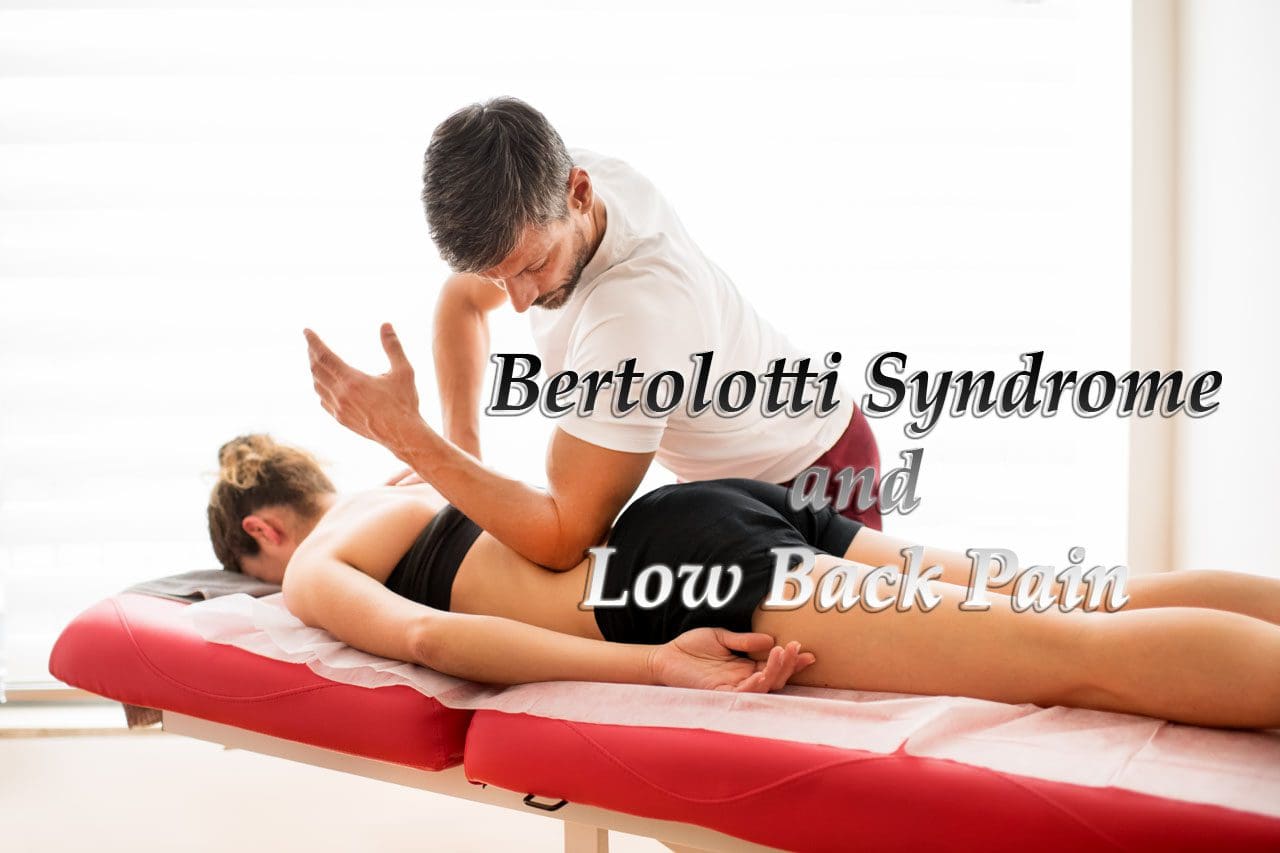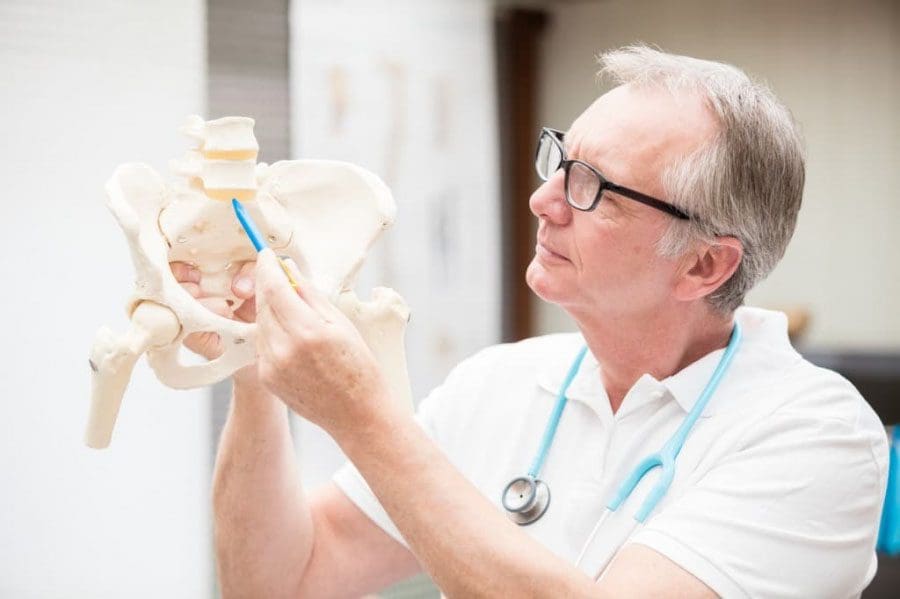Bertolotti Syndrome Low Back Pain
Bertolotti syndrome is something has not been heard of when it comes to lower back pain, but diagnostic work has uncovered a common congenital condition. Back pain is experienced at some point by all of us. Around two-thirds of the population will develop low back pain in their life, and more than half will develop chronic low back pain or pain that has lasted more than six months. Low back pain can be challenging in finding the root cause. Diagnostic work is required through X-rays and MRIs. These tests can identify a lesser-known cause of mechanical low back pain called Bertolotti syndrome.
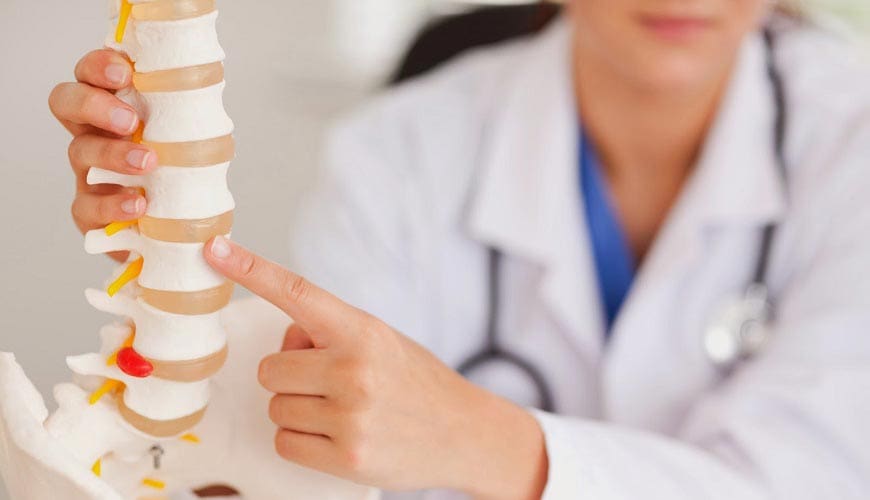
Table of Contents
Bertolotti Syndrome
This congenital condition’s name comes from Italian physician Mario Bertolotti. It is in 10 to 20 percent of the population, —with or with no lower back pain. Bertolotti syndrome happens when the last lumbar vertebra, known as the lumbosacral transitional vertebra/LSTV. This vertebra and the sacrum become fused together or create a false joint due to an enlarged transverse process.
This can be bony bumps on the vertebrae where muscles and ligaments attach to the lumbosacral transitional vertebra. When the LSTV and sacrum fuse together, known as sacralization or pseudo-joint, it does not generate pain. It’s just the way that an individual’s anatomy has been since birth. Only when it causes lower back pain that it is called Bertolotti syndrome.
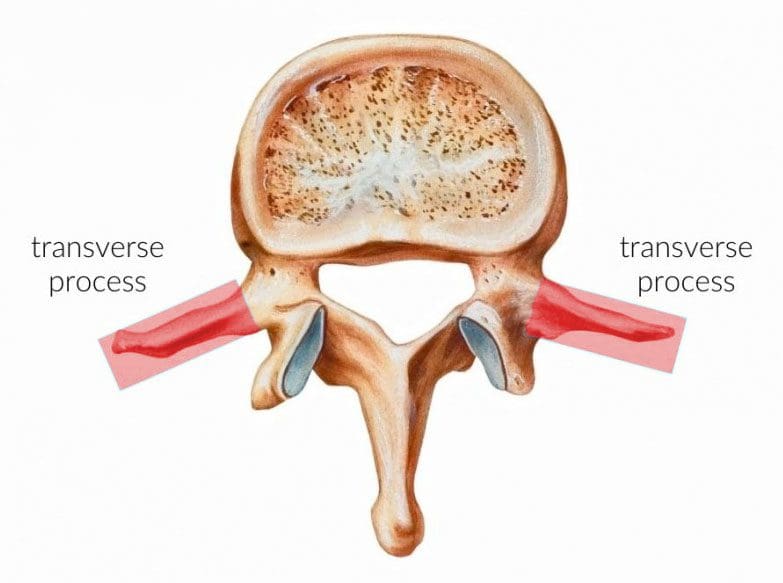
Causes
Low back pain that leads to inflammation and reactive muscle spasms brought on from Bertolotti syndrome can be caused by:
- Asymmetrical structures of the lumbar vertebrae. If the LSTV is fused to the sacrum and iliac bone, these are the wings of the pelvis, which can place unwanted stress on the sacroiliac joint, which can cause pain that is felt above the buttocks.
- A pseudo-joint does not have the cushion or lubrication between the bones like real joints to absorb shock. This causes bone-on-bone grinding, which can be quite painful and can lead to osteoarthritis. This can also generate added stress on the discs of the pseudo-joint.
- Sacralization fusion can decrease the spine’s mobility. This can speed up the wear and tear of the vertebrae and shock-absorbers of the intravertebral discs.
- Added non-equal force/s on the muscle tissues that surround the lower back. This can be caused by the spine not being properly aligned causing muscle imbalance/s and fatigue. Both sides of the back can be affected, but when tightness and muscle spasms in the low back and pelvis present, it’s usually only on one side.
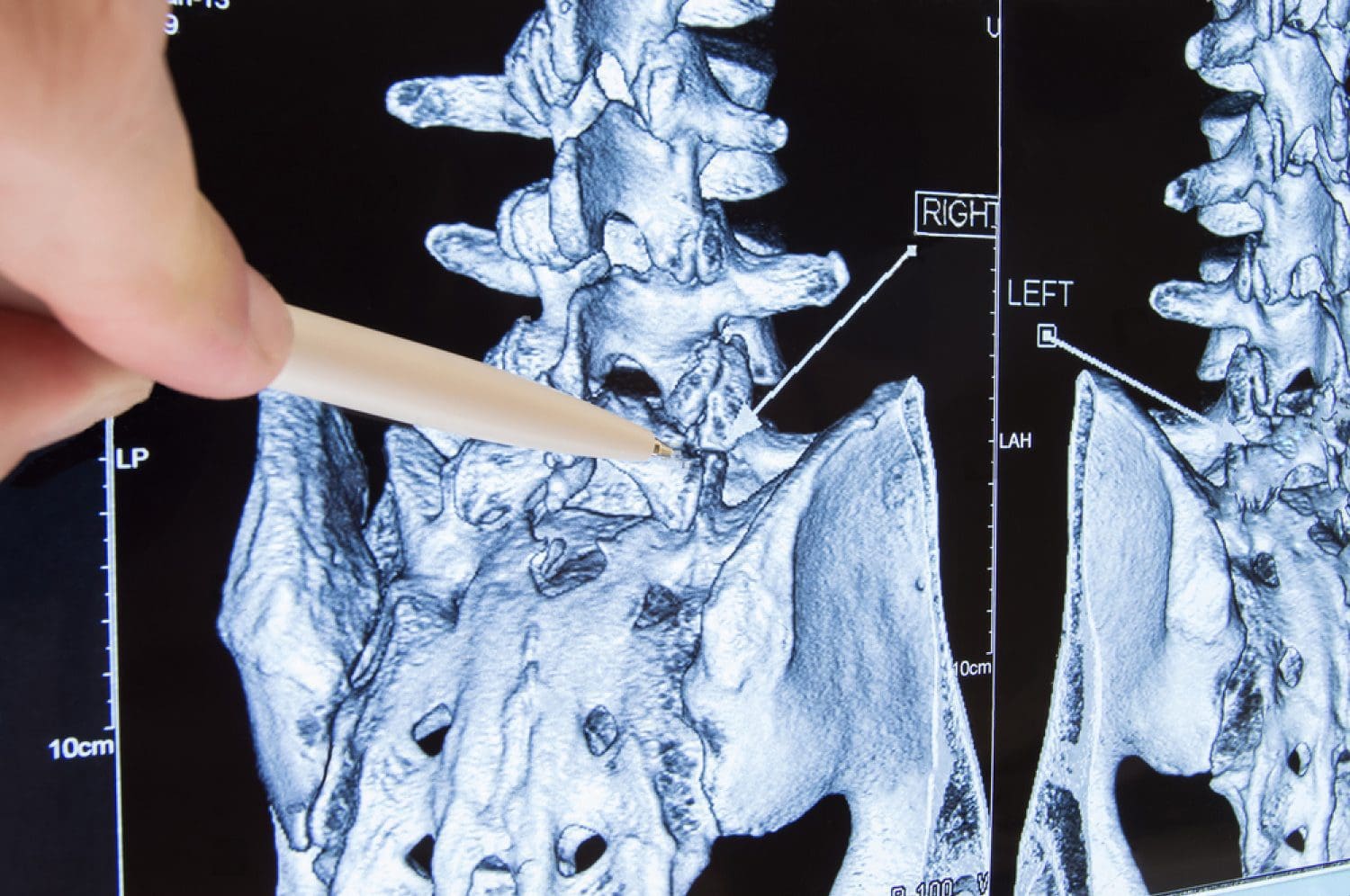
Symptoms
Most individuals usually never know they have a sacralization or pseudo-joint. These are often found accidentally from an X-ray for something unrelated. But when symptoms present they can vary from person to person and usually appear in adulthood—in the 20s or 30s.
These include:
- Low back pain that is localized and does not spread/radiate down the legs
- Pain or discomfort in or around the sacroiliac joint
- Stiffness that comes out of nowhere or difficulty moving a certain way with pain present
- Symptoms improve once the individual sits or lays down
Diagnosis
Bertolotti syndrome can be diagnosed based on medical history, physical exam, and X-rays. A physical exam can include a recreation of the movement/s that triggered the pain/discomfort. An X-ray of the low back and pelvis will reveal any bony abnormalities.
Treatment
Bertolotti syndrome can be effectively managed with non-invasive treatments. These include:
- Improperly and overdoing repetitive rotation/s and extension/s through work or just movements that have become second nature are injuries just waiting to happen. Lifestyle changes and re-learning how to move properly will ease the strain on the affected area.
- Over the counter pain medication/s like Advil, Aleve, or Tylenol.
- Chiropractic/Physical therapy can help build low back areas and increase mobility.
- Local anesthetic and spaced out intervals of corticosteroid injections to the affected nerve/s to reduce inflammation.
- Platelet-rich plasma (PRP) uses the body’s platelets to reduce pain, inflammation, and healing the damaged joints through an injection.
- Prolotherapy treatment uses concentrated local anesthetic and dextrose injected into the low back area to enhance the body’s natural healing.
- Radiofrequency ablation uses heat to numb the affected nerves around a pseudo-joint so that pain reduces.
- Surgery is the last resort and is usually done to eliminate a pseudo-joint. It can also consist of reducing or removing an elongated transverse process and can be performed as a same-day or outpatient procedure.
If you or someone you know is dealing with some form of idiopathic low back pain and doctors can’t seem to pinpoint the cause. Bertolotti syndrome could be a suspect, therefore it’s best to seek a spine specialist near you that can help.
Treating Severe & Complex Sciatica
NCBI Resources
Post Disclaimer
Professional Scope of Practice *
The information herein on "Bertolotti Syndrome Low Back Pain" is not intended to replace a one-on-one relationship with a qualified health care professional or licensed physician and is not medical advice. We encourage you to make healthcare decisions based on your research and partnership with a qualified healthcare professional.
Blog Information & Scope Discussions
Our information scope is limited to Chiropractic, musculoskeletal, physical medicines, wellness, contributing etiological viscerosomatic disturbances within clinical presentations, associated somatovisceral reflex clinical dynamics, subluxation complexes, sensitive health issues, and/or functional medicine articles, topics, and discussions.
We provide and present clinical collaboration with specialists from various disciplines. Each specialist is governed by their professional scope of practice and their jurisdiction of licensure. We use functional health & wellness protocols to treat and support care for the injuries or disorders of the musculoskeletal system.
Our videos, posts, topics, subjects, and insights cover clinical matters, issues, and topics that relate to and directly or indirectly support our clinical scope of practice.*
Our office has reasonably attempted to provide supportive citations and has identified the relevant research study or studies supporting our posts. We provide copies of supporting research studies available to regulatory boards and the public upon request.
We understand that we cover matters that require an additional explanation of how it may assist in a particular care plan or treatment protocol; therefore, to further discuss the subject matter above, please feel free to ask Dr. Alex Jimenez, DC, or contact us at 915-850-0900.
We are here to help you and your family.
Blessings
Dr. Alex Jimenez DC, MSACP, RN*, CCST, IFMCP*, CIFM*, ATN*
email: coach@elpasofunctionalmedicine.com
Licensed as a Doctor of Chiropractic (DC) in Texas & New Mexico*
Texas DC License # TX5807, New Mexico DC License # NM-DC2182
Licensed as a Registered Nurse (RN*) in Florida
Florida License RN License # RN9617241 (Control No. 3558029)
License Compact Status: Multi-State License: Authorized to Practice in 40 States*
Presently Matriculated: ICHS: MSN* FNP (Family Nurse Practitioner Program)
Dr. Alex Jimenez DC, MSACP, RN* CIFM*, IFMCP*, ATN*, CCST
My Digital Business Card


